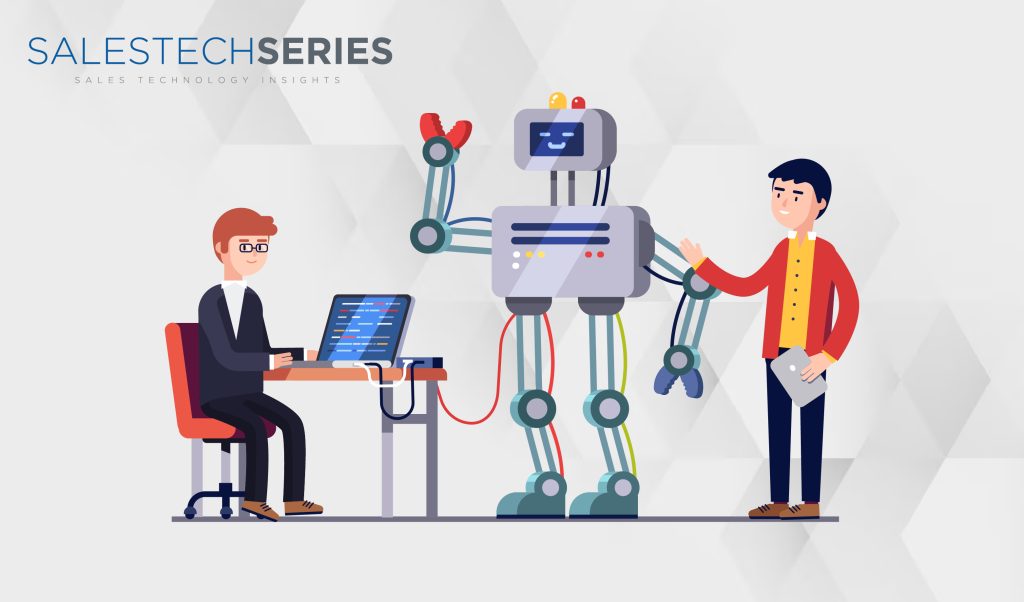Lead scoring is a methodology used in sales and marketing to rank prospects against a scale that represents the perceived value each lead represents to the organization. The resulting score is used to determine which leads a receiving function will engage in order of priority.
Machine Learning (ML) can significantly enhance the lead-scoring process. By analyzing historical data, ML algorithms can identify patterns and trends that humans might overlook. These algorithms can predict the likelihood of a lead converting into a sale, helping businesses focus their efforts on high-value leads.
In this blog, we will learn more about using machine learning to prioritize leads before they convert into customers.
Harnessing Machine Learning for Effective Lead Scoring
Predictive lead scoring with machine learning offers numerous benefits for businesses aiming to optimize their sales and marketing efforts. Here are some key advantages:
1. Increased Efficiency:
Machine learning algorithms can process vast amounts of data much faster than humans, enabling businesses to score leads more efficiently.
2. Improved Accuracy:
Machine learning models can identify complex patterns in data, leading to more accurate lead scoring. This helps businesses focus their efforts on the most promising leads.
3. Personalized Marketing:
With predictive lead scoring, businesses can tailor their marketing efforts to individual leads based on their predicted value. This personalization can lead to higher engagement rates and increased sales.
4. Better Resource Allocation:
By identifying high-value leads, businesses can allocate their resources more effectively, focusing their time and effort on leads that are most likely to convert.
5. Continuous Learning:
Machine learning models learn from each interaction, continuously improving their predictions over time. This means that the lead-scoring process will become more accurate as more data is collected.
Enhancing Lead Prioritization with Machine Learning
Machine Learning (ML) has revolutionized lead prioritization in marketing. By analyzing historical data and identifying patterns, ML can predict which leads are most likely to convert, helping businesses prioritize their efforts. Here’s how ML improves lead prioritization:
1. Efficient Resource Allocation:
ML enables businesses to focus their resources on high-value leads, optimizing marketing efforts and reducing wastage. This targeted approach can lead to higher conversion rates and increased sales.
2. Real-Time Prioritization:
ML algorithms can analyze data in real time, allowing for dynamic lead scoring. This means businesses can adjust their strategies on the fly, responding to changes in lead behavior immediately.
3. Predictive Analysis:
ML can predict future customer behavior based on past data. This predictive analysis can help businesses identify potential high-value leads before they even show interest, giving them a competitive edge.
4. Personalized Marketing:
ML can segment leads based on various factors like demographics, behavior, and engagement. This segmentation allows for personalized marketing, which can improve engagement rates and conversions.
5. Continuous Learning:
ML algorithms learn from each interaction, improving their accuracy over time. This continuous learning ensures that the lead prioritization process becomes more effective as more data is collected.
6. Scalability:
ML algorithms can handle large volumes of data, making them scalable. As a business grows and the number of leads increases, ML can continue to prioritize leads effectively.
Read More: SalesTechStar Interview with Alex Saric, CMO at Ivalua
Exploring Different Predictive Lead Scoring Models
Predictive lead scoring models leverage machine learning to rank leads based on their likelihood to convert. These models analyze historical data and identify patterns that indicate a lead’s potential value. Here are five different predictive lead-scoring models:
1. Regression Models:
These models identify relationships between various factors (like demographics, behavior, etc.) and the likelihood of conversion. They’re useful for predicting continuous outcomes, like the potential lifetime value of a lead.
2. Classification Models:
These models categorize leads into different classes based on their likelihood to convert. Examples include logistic regression and support vector machines.
3. Decision Trees:
These models use a tree-like model of decisions to predict a lead’s likelihood to convert. They’re easy to understand and can handle both categorical and numerical data.
4. Random Forests:
These models aggregate the predictions of multiple decision trees to determine a lead’s score. They are robust enough to overfit and can handle large datasets.
5. Neural Networks:
These complex models can capture non-linear relationships between variables. They’re powerful but require a lot of data and computational resources.
Navigating the Challenges of Implementing Machine Learning in Lead Generation
While machine learning can significantly enhance lead generation, implementing it comes with its own set of challenges and considerations.
1. Data Quality:
Machine learning models are only as good as the data they’re trained on. Ensuring high-quality, relevant, and unbiased data is crucial for effective lead scoring.
2. Model Complexity:
While complex models can capture intricate patterns, they can also be prone to overfitting. Striking a balance between model complexity and generalizability is essential.
3. Interpretability:
Machine learning models, especially complex ones, can often be “black boxes”. Ensuring model interpretability can help gain stakeholder trust and facilitate better decision-making.
4. Resource Intensive:
Developing, training, and maintaining machine learning models can be resource-intensive. It’s important to consider the cost and time investment required.
Leveraging machine learning for lead generation can significantly enhance marketing efforts. By accurately identifying high-value leads before they convert, businesses can optimize their strategies, ensuring resources are effectively utilized, and conversion rates are maximized. The future of marketing lies in harnessing the power of such technological advancements.





















